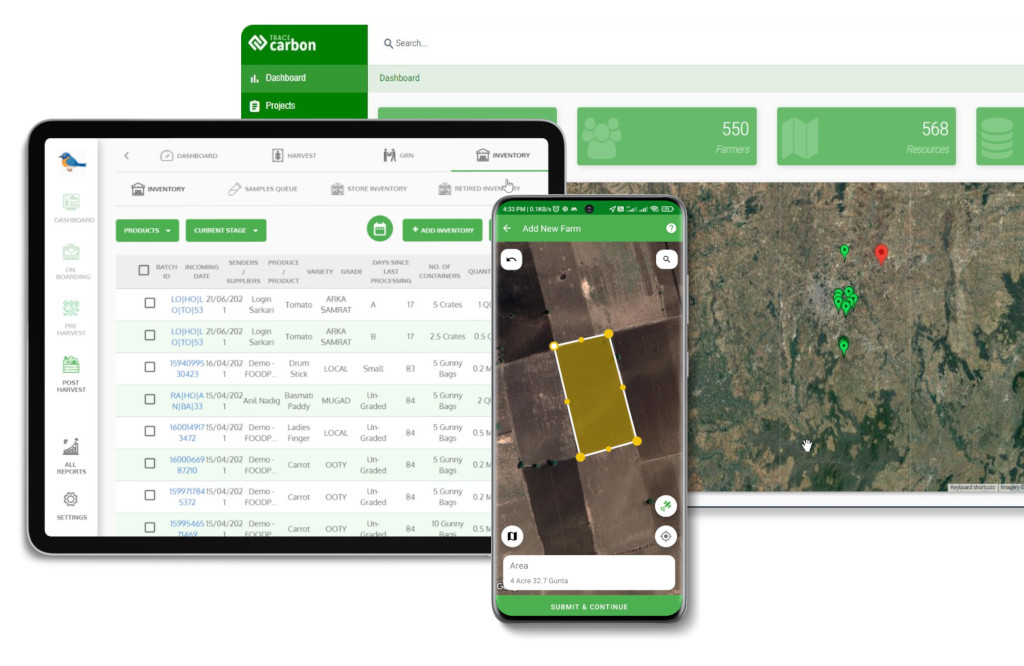Contact: +91 99725 24322 |
Menu
Menu
Quick summary: Ensure EUDR compliance with end-to-end wood chip traceability. Learn how batch tracking, AI monitoring, and blockchain can safeguard your supply chain from deforestation risks. Future-proof your business—discover compliance solutions today!

Can you guarantee that every wood chip in your supply chain is deforestation-free? As the EUDR deadline looms, businesses in the paper and packaging, must ensure wood chip traceability from forest to final product—or risk supply chain disruptions, rejected shipments, and hefty penalties.
Blended materials make compliance a nightmare. Sourcing wood from multiple regions and processing it into pulp, packaging, or rubber makes tracing individual wood chips back to their original forest plots nearly impossible. Without real-time tracking, batch-level documentation, and supplier transparency, businesses face compliance risks, audit failures, and reputational damage. How can you ensure full wood chip traceability while staying compliant with EUDR? Let’s explore the solutions.
Key Takeaways
Tracking wood chips back to their original plantations is difficult due to:
Since tracking individual wood chips is impractical, businesses should use a batch-based traceability system that maintains links between raw materials and their original sources.
Example:
A pulp and paper company sources wood from three suppliers. Each supplier logs geolocation data of harvested trees into a cloud-based traceability system, linking shipments to digital IDs. These IDs remain attached to batches of wood chips, ensuring each blend can be traced back to specific forest sources.
Example:
A paper mill processes 1,000 tons of wood chips daily, sourced from five different plantations. Before blending, each batch is scanned and logged into an ERP system that links proportions of each supplier’s contribution. If compliance checks are needed, authorities can verify which plantations contributed to each production run.
Example:
A packaging company sources wood from Southeast Asia. They use satellite monitoring tools to verify that their suppliers’ plots have not been cleared after 2020 (EUDR compliance threshold). If deforestation is detected, the supplier’s shipment is flagged as high-risk before entering production.
Example:
A European company imports pulp from South America. They perform randomized isotope testing on shipments to detect if the raw material matches the declared origin. If discrepancies appear, the supplier must provide additional proof of sourcing compliance
Example:
A global paper producer integrates blockchain with supplier traceability reports. Customers can scan a QR code on a product to verify its deforestation-free status.

If your business is in paper, packaging, furniture, , or any wood-based industry, you already know the EU Deforestation Regulation (EUDR) is a game-changer. No more gray areas—either you can prove your wood supply is deforestation-free, or you risk blocked shipments, rejected orders, and major fines.
But how can you trace each wood chip back to its source when wood is chipped, pulped, blended, and processed along the way? The answer lies in smart traceability strategies that connect batches to their origin, digitize compliance, and leverage technology for real-time monitoring.
Let’s break down five best practices to help you stay ahead of EUDR compliance, protect your supply chain, and maintain customer trust.
Why individual tracking is unrealistic:
Best Practice:
Example:
A European paper mill sources pulp from multiple countries. By using batch tracking, they segregate pulp from certified forests vs. high-risk zones. This allows them to prove compliance without needing to trace every fiber individually.
Why paperwork fails:
Best Practice:
Example:
A furniture manufacturer in Germany digitized its entire supply chain, tracking logs from certified plantations to final furniture assembly. Using blockchain, they ensure that their sourcing records are 100% verifiable and tamper-proof, giving them a compliance advantage over competitors.
Why traditional auditing isn’t enough:
Best Practice:
Example
According to Global Forest Watch, over 11 million hectares of tropical forest were lost in 2022 alone—many in regions linked to wood supply chains. AI-based risk detection systems can flag deforestation before high-risk materials enter your supply chain.
Why supplier self-reporting isn’t enough:
Best Practice:
Example:
A paper packaging company sources pulp from multiple regions. By testing fiber samples, they detect inconsistencies between supplier claims and actual material origin—helping them avoid fraudulent sourcing.
Why incomplete documentation leads to rejection:
Best Practice:
TraceX offers a comprehensive EUDR Compliance platform designed to help businesses in agriculture, timber, rubber, and food industries achieve full compliance with the EU Deforestation Regulation (EUDR). The platform provides real-time tracking, supplier verification, and automated compliance reporting, ensuring that every product in the supply chain is deforestation-free and meets regulatory standards.
Key Features & Capabilities:
EUDR compliance is no longer an option—it’s a necessity. As regulations tighten, businesses in the paper, packaging, furniture, and wood industries must adopt robust wood chip traceability systems to prove their supply chains are deforestation-free. By implementing batch tracking, digital traceability tools, AI-based monitoring, and supplier audits, companies can eliminate compliance risks, prevent shipment rejections, and build consumer trust.
The time to act is now. Whether you’re sourcing raw timber, processing wood chips, or manufacturing wood-based products, a proactive traceability strategy is your strongest asset.
Companies use batch tracking, digital supplier records, and GPS-based monitoring to link wood chips to verified deforestation-free sources before processing.
A combination of blockchain, AI-powered satellite monitoring, geolocation tagging, and ERP-integrated compliance dashboards helps businesses maintain real-time traceability.
Non-compliance can lead to shipment rejections, regulatory fines, market access loss, and reputational damage, making traceability a critical investment for businesses.
